-
When you click on links to various merchants on this site and make a purchase, this can result in this site earning a commission. Affiliate programs and affiliations include, but are not limited to, the eBay Partner Network.
-
Posts
2,764 -
Joined
-
Last visited
Content Type
Forums
CGC Journals
Gallery
Events
Store
Posts posted by markseifert
-
-
So, this is a rather old thread, but does anyone know if this information holds true? CGC still labels Pep 23 as the 3rd appearance of Archie, but they don't label Jackpot 4 (or any comic for that matter) as the 2nd appearance. Overstreet also doesn't take a stand as to which is the 2nd or 3rd. Any new info would be great.
LoC Catalog of Copyright Entry Dates of Publication are as follows --
Pep 22 -- Oct 15
Pep 23 -- Nov 15
Pep 24 -- Dec 15
Jackpot 4 -- Dec 20
Which essentially backs up the arrival date info at the top of the thread.
In theory, Dates of Publication are supposed to be approximately the earliest dates the periodical was available for sale to the public anywhere. In reality, it appears that they simply listed the 15th for each month when they sent in the registration paperwork on Pep, which I'd doubt is down-to-the-day accurate. More likely they simply planned to go to press the second week of every month for Pep (or something like that).
That said, if we exclude the Top Notch mentioned upthread as an ad (and presuming there's nothing else lurking out there), there's no doubt that Pep 23 is the 2nd app.
I think you can PROBABLY say Pep 24 is the 3rd app, but I wouldn't consider that mortal-lock definitive barring some info or office copies from the publisher's office.
-
Talk about newsstand fresh... that book is ridiculous. Wow.
 Got this little funnybook back from The CGC today...
Got this little funnybook back from The CGC today...
...now I have a couple of nickels to rub together

-
George Olshevsky Copy.
Cool book and very nifty provenance.

-
one more bulletman down, 3 to go.
Will we see that sensational canine cop introduced next?

-
Wow, that's the stuff. Great set of books.
 My Atlas 1st issue collection....now let's just hope I don't lose my job...
My Atlas 1st issue collection....now let's just hope I don't lose my job...

-
Buttock -- I know this is an old thread but I was catching up on some casual late night research and stumbled across your post which I'd missed at the time. Interesting note about the editorial differences between the CCA and Centaur Publications books, which is something I hadn't thought much about before. Good stuff.

Something else interesting I came across awhile back that rounds out some of the overall Centaur timeline:
Comic Magazine Co. co-founder William H. Cook declared personal bankruptcy in Feb 1937 -- note that that's just as they completed their expansion from one to four titles. So it's hard not to make the cause/effect connection there and presume that he was for whatever reason personally on the hook for some of the company's bills due to the expansion (and being clear, this is of course a different event from Centaur Publications' 1940 bankruptcy).
And of course, the Ultem acquisition/merger is just a few months later, and when you combine that with the Cook bankruptcy and the publication schedule leading up to it, you start to get a picture of how things played out during this period.
It's also interesting to note that Cook seems to have been the only "loser" out of the whole situation.
Mahon went on to help Jacquet start Funnies Inc.
Samuel Fried, also listed as in the statement of ownership on some of the Comic Magazine Co books, was an attorney who went on to represent many major publishers of the day, most notably he makes an appearance in DC v Bruns (the Superman / Wonder Man lawsuit). Some feel he was acting as a proxy for distributor Kable to bankroll the Comic Magazine Co's line, but I think this is far from certain.
Busy Arnold used Comics Magazine Co's talent (contacts William H. Cook handed over to him, per Arnold himself in the old Steranko comic history books), AND their Cleveland printer to start Quality.
Cook... was never heard from in comics again...?
To clarify things from a background perspective, I think it's worthwhile to go over the history of the Centaur family of publishers.
1936 -- Comics Magazine Co started publishing Comics Magazine/Funny Pages, Funny Picture Stories, Detective Picture Stories, Western Picture Stories, etc.
1937 -- Chesler starts the "Star-" books, later acquired by Ultem
1937 -- Ultem acquires Comics Magazine Co's lines
1938 -- Ultem goes under, selling some properties (e.g. The Clock) to Quality, and the rest to Hardie/Kelly/Gardner who repackage them into Centaur, which is where the bulk of the hero/sci-fi books came.
Centaur lasted from 1938 until 1940, with the flagship titles being Amazing Man, Amazing Mystery Funnies, and Funny Pages. However, the indicia of AMF 1 (8/38) lists "Centaur Publications, Inc" as the publisher, and the indicia of A-Man (9/39) lists "Comic Corporation of America" as the publisher. (For reference sake, Funny Pages switched from Ultem to Centaur pubs with v2 n6 in 3/38). The Arrow was the only Centaur title to last beyond the demise of Centaur and with issue 3 the publisher switched from Centaur to CCA (which, incidentally, may explain why #3 is scarcer).
CCA titles, on the other hand, ran from 1939-1942.
One thing you may notice when looking at how the titles changed over time is that Centaur tended to focus on super-hero & sci-fi, while CCA became patriotic & war themed (Man of War, World Famous Heroes, Stars & Stripes, Liberty Scouts).
PreHero (
 Jeff) made a nice point previously regarding the common held theory that the Centaur line died largely due to poor distribution, but that doesn't seem to hold true as Centaurs have been present in most all of the large pedigrees from all over the country.
Jeff) made a nice point previously regarding the common held theory that the Centaur line died largely due to poor distribution, but that doesn't seem to hold true as Centaurs have been present in most all of the large pedigrees from all over the country. This book I've found (I can't say I've discovered it because it was known, just not widely), and subsequent digging I've done may shed a little light on what went on at the end of the Centaur line.
Here's a scan of the book, "Khaki Wacky".
-
Great pic! Who is that in the photo?
This was on eBay a few days ago... [/url]
[/url] -
Great copy
 This just arrived back from CGC.
This just arrived back from CGC.

-
Whoa. I missed the NY World's Fair '39 color video footage earlier. That is AMAZING.
-
Speaking of Houstoncon...I was reading the comic section in The Encyclopedia of Collecting (Time-Life Books 1978), the author Richard E. Marschall writes that selling back-issue comics was becoming a serious business as evidenced by the transactions at the many comic conventions. He describes an incident at a Houstoncon possibly in 1968 or maybe earlier where a California dealer was enraged because he was offered only 2 cents each for the 3000 Marvel comics he had lugged from California. Possibly unhappy with the prospect of having to bring all those books back to California, he dumped all 3000 books into the hotel swimming pool. Marschall figures each of those Marvels would have been worth about $3 each in 1978. Could anyone who was there or hear about this have more details or was this an exaggeration?
This same anecdote is in the yearly market report section of a relatively early (mid to late 70s?) Overstreet. I remember reading it vividly as a kid. Not sure there's more info there, as that's pretty much exactly as I remember it.
-
this is proof that someone had the problem and sent away for the product...

I can't believe it took 4 days for this one to show up.

That was on the back cover of one of the first high grade Timely books I ever bought. "Man this is a nice book......... ew."

-
As a Silver Age brat, I sent away for the Revolutionary War soldier set, and the Vick Lawston magic catalog. I wanted the kid-sized submarine, but no luck on that one!

This has probably come up here before, but one or two pics of the infamous "Polaris Nuclear Sub" from the Silver Age have surfaced in recent years.
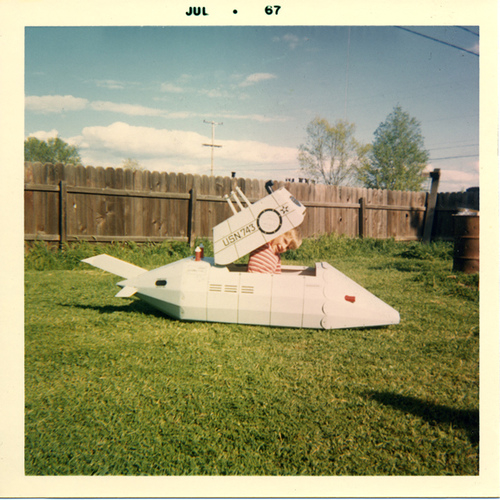
-
Thought readers of this thread might be interested in this...
http://therealalfrede.blogspot.ca/2013/03/the-real-alfred-e.html
The inspiration for Alfred E. Neuman is long known to have been a character commonly used in advertising, comics, postcards, etc back to the turn of the century. As the author states:
The upshot of all the discussion was, basically, that Alfred E. Neuman is a copy of a copy of a copy of an image that bounced around for decades in various guises - political buttons, silly postcards, ads for painless dentistry, and Nazi anti-semitic propaganda posters. No one could identify the image that started it all, although some people suggested that the image evolved from a tradition of cartoonish and racist depictions of Irish immigrants from the mid- to late-19th Century America.Now, the author of this blog, Peter Jensen Brown, thinks he has discovered the origin of the character in advertising for an 1894 Broadway play called The New Boy:

Really fascinating stuff and very well researched.
-
Oh wow, that's a great cover.
Just picked this up from a fellow board member - very excited, only 3 graded and an amazing, amazing Atlas PCH cover (top 5 Atlas PCH cover for me):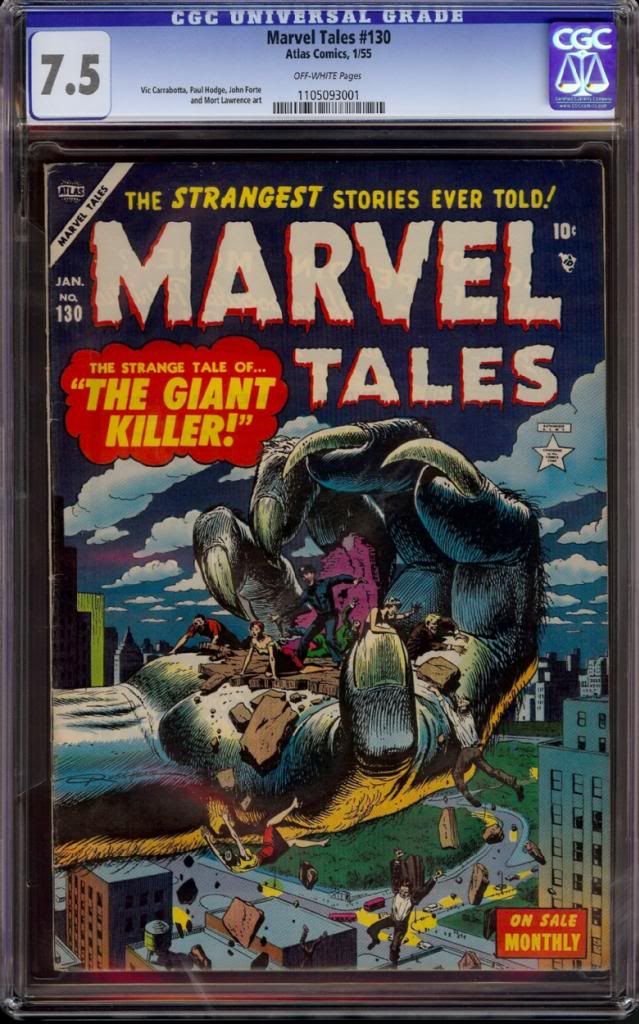
-
Forgot about this series also. Ronald Reagan on cover & story in this one. Zero on census, though I see a forum member has a raw copy on ebay.
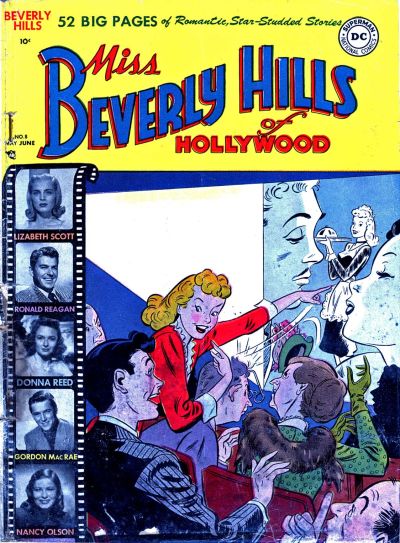
-
Books that don't sell for much and for which there is little demand tend not to get slabbed.
No doubt.
-
[
Does Ian Levine have all of these? I assume he does...
Yeah, I'm sure he does. Though the Miss Melody census numbers are silly low (4 copies of #1, NO copies of #2, 1 copy of #3). Looks like a very nice copy of #3 is about to close on ebay for a fair bit more than the Crippen copy went for several years ago.
I'm always surprised when I stumble across a 1950s Marvel or DC series which has some issues with zero copies in the census this far into the CGC era, but I guess I shouldn't be.
-
I don't think I've ever seen an issue of Feature Films. Earlier this year in Yorba Linda there was a copy of Movie Comics #1 an obscure 40's title.
I often wonder how much of this kind of thing has disappeared into movie/memorabilia collections over the course of many decades, never to be seen again. In completing my Boy Commandos run recently, I was a little surprised to note that the two celeb tie-in issues from just before this era (#30, Bob Feller, #32, Dale Evans) are definitely among the lesser-seen issues of that run.

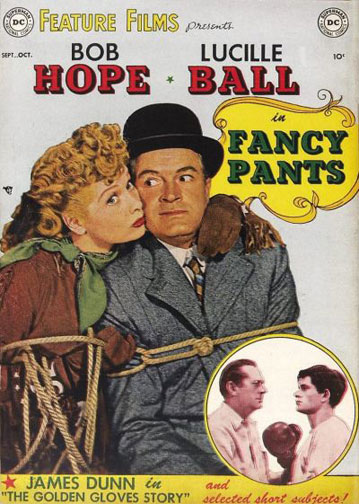

-
Thanks for the welcome, folks! And I like seeing those Congo Bill covers. A 1950s esoteric DC thread would be cool. What other series might be included?
Phantom Stranger
Congo Bill
Frontier Fighters
Legends of Daniel Boone
Charlie Chan
Star Spangled (Dr. 13 issues)
Sensation Mystery
Others?
Danger Trail
It's Game Time
Gang Busters
Mr. District Attorney
Rex the Wonder Dog
Big Town
Miss Melody Lane of Broadway
Feature Films
Probably a few others depending on what we'd consider esoteric. 1950s DC is indeed pretty cool.
(not my comics, but... some stuff you don't see every day)
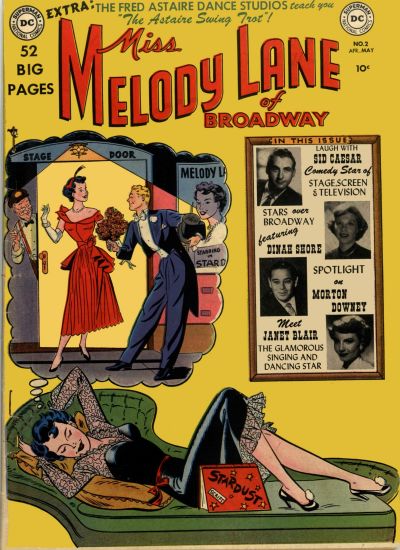
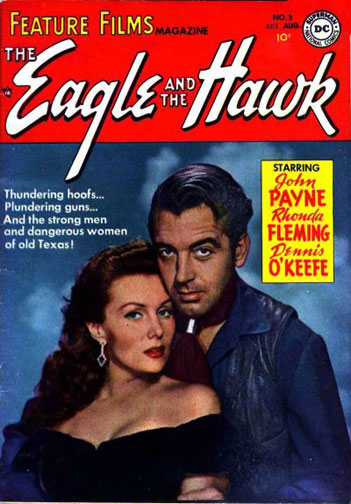
-
Mark, you might enjoy _A Means to Freedom_. It's a 2-volume set collecting the correspondence between REH and HPL. Really great stuff including their famous barbarism vs. civilization debate.
Wow, I had not even heard of this. That does sound fascinating, thanks! (thumbs u
-
I've been fascinated by his writing ever since and have read a little of his history but it is time to read more. Whenever I read his stories I can feel the oppressive weight of a Nor'easter over Providence weighing down my soul!!
I first read Lovecraft (and Howard) when I was about the same age as when you started reading him.
I haven't read anything by HPL since I was in high school. I wonder if I'd still enjoy the stories if I were to reread any of them.
I think you might as I found myself again in possession of a paperback of his stories a few years ago and thoroughly enjoyed reading some of his tales again. There is an innate oppressive creepiness to his writing that makes you fear going down into the cellar or out into the dark!!
I first read HPL in college. A guy I knew from around campus saw me reading a paperback collection one day, came over and after a conversation said "oh, I read collections of his LETTERS now."
I think I probably looked at him like he was nuts. "His letters? Wha...?" I thought. But of course, that is just the kind of behind the scenes / historical material I would subsequently grow to love so much (I haven't read too many of Lovecraft's letters, but generally speaking I mean).
You guys should check out the HPL and REH collections available on kindle if you haven't. Complete or near-complete collections can be had very cheap. I've read to tatters and replaced a few times over some of original anthology paperbacks, so this is one area that the digital is useful. I still return to those stories from time to time.
-
Classic "frozen moment" that anticipated later film techniques!
Now that you mention it, that is a rather cool and unique way of doing that.
-
-
Jerry signed more than one apparently....
There were definitely multiples in the collection.





The most valuable and noteworthy Platinum-Age comics?
in Golden Age Comic Books
Posted
Yeah, those are historically VERY cool. I'm sorry to hear they're THAT rare, as I'd like to pick an example up sooner or later.
Along this line, question for you Platinum collectors... Where are all the Gulf Oil Funnies...? A huge run (400+ issues), and supposedly had huge print runs. And it's not like they are outrageously early compared to some of the other stuff mentioned here (1933 - 1941 or so I think).
I'm new to this area of interest, so maybe I'm off base, but on the face of it, it's the kind of thing you'd expect to see relatively frequently. Or maybe I haven't been watching for 'em long enough.